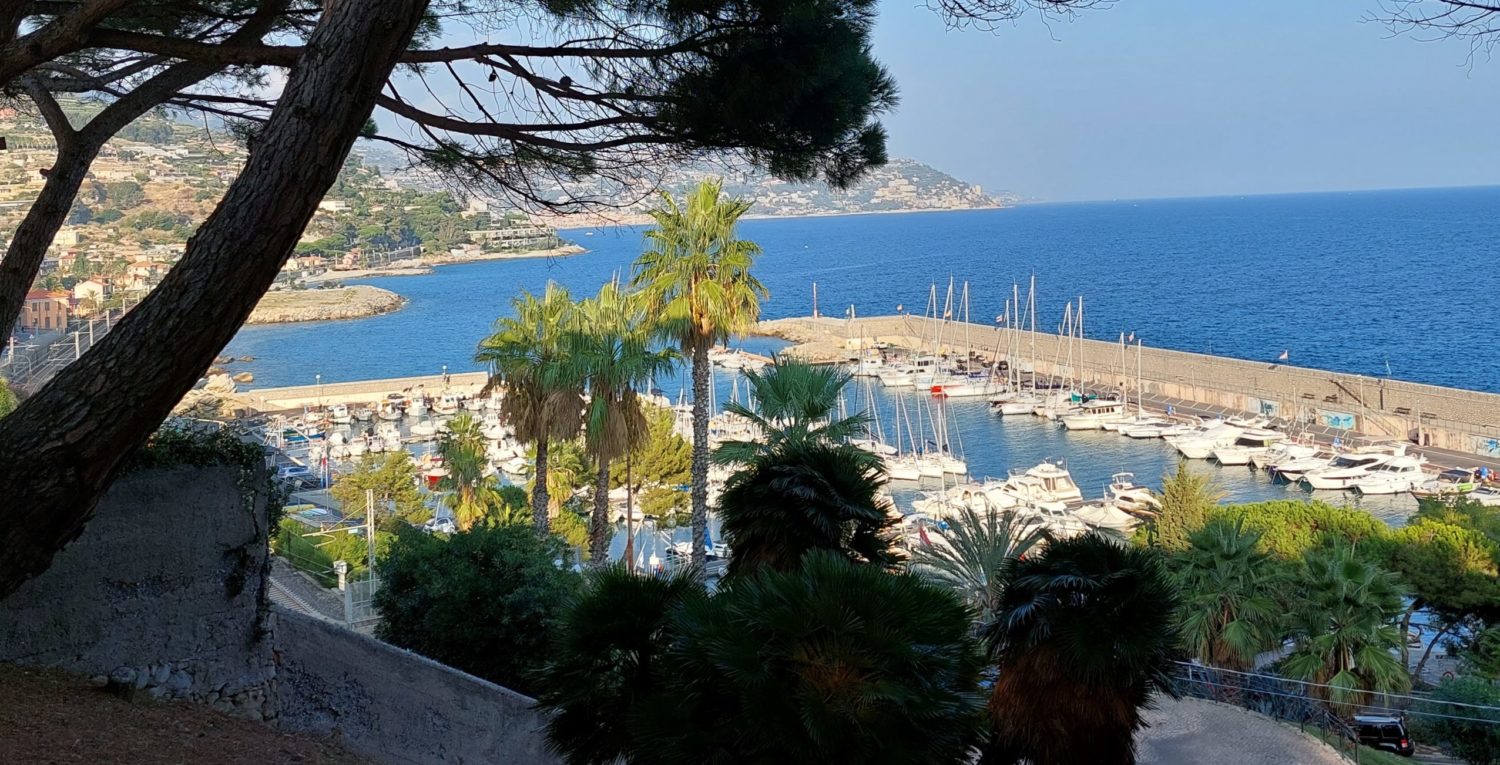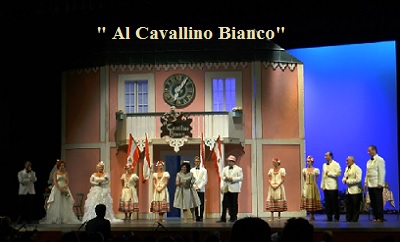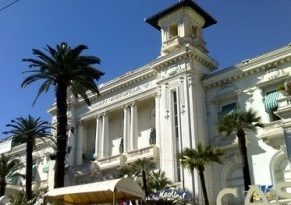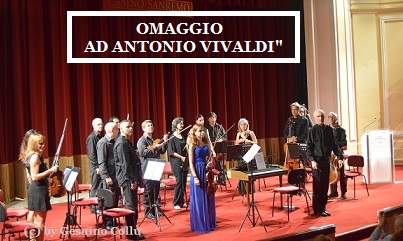“AL CAVALLINO BIANCO” CONQUISTA IL PUBBLICO DEL TEATRO ARISTON
Sanremo: una spumeggiante interpretazione di “Al Cavallino Bianco” conquista il pubblico del Teatro Ariston.
La Compagnia Teatro Musica Novecento, con la regia di Alessandro Brachetti, ha presentato ieri sera (mercoledì 19 agosto 2015) presso il Teatro Ariston di Sanremo una brillante interpretazione della celebre operetta in due atti Al Cavallino Bianco, con musiche di Ralph Benatzky e Robert Stolz.
Una vivace coreografia tirolese ha fatto da sfondo allo scambio di battute dei personaggi, ospiti dell’Hotel Al Cavallino Bianco, diretto dalla bella e teutonica proprietaria Josepha (Susie Georgiadis), amata dal suo primo cameriere, Leopoldo (Domingo Stasi), degni interpreti delle famose arie musicali, magistralmente accompagnate dall’Orchestra Cantieri d’Arte, diretta dal Maestro Stefano Giaroli. Particolarmente significativo, tra gli altri, il duetto tra Josepha e Leopoldo “Mi pare un sogno un illusion” oltre al celebre leitmotiv “Al Cavallino Bianco”.
Eclettico ed energico il ruolo di Sigismondo, interpretato dallo stesso regista, che ha intrattenuto gli spettatori in un crescendo di coinvolgenti battute e vocalizzi, con inediti e divertenti intermezzi diretti al pubblico e allo stesso Direttore di Orchestra. Significativa l’interpretazione di Zanetto Pesamenole(Francesco Mei), ricco industriale, ospite dell’Hotel insieme alla figlia Ottilia (Livia Farnese), arricchita da un autentico dialetto veneto, che ha richiamato direttamente la ben nota “Commedia degli Equivoci” di tradizione goldoniana.
Perfettamente nel ruolo, Claretta (Silvia Felisetti), figlia del goffo e squattrinato professor Hinzelmann (Marco Falsetti) che ha divertito senza mai stancare sino all’ultima battuta con i suoi buffi difetti di pronuncia, motivo di spassosi giochi di parole e ironiche citazioni da parte del vanitoso Sigismondo.
I ritmi allegri e spensierati del balletto, diretto dal coreografo Salvatore Loritto, ed i costumi in perfetto stile Primi Novecento hanno contribuito a creare uno spettacolo davvero coinvolgente per tutti i presenti, tra cui anche molti giovani e intere famiglie.
di Maurizio Abbati
——————————————————————————————————-———-————————————————————————————–
Sanremo: a lively performance of “The  White Horse Inn” captured the attention of the audience at the Ariston Theatre.
Yesterday (19th August 2015) the theatre company, Compagnia Teatro Musica Novecento, directed byAlessandro Brachetti, presented an amusing version of the well known operetta, in two acts, The White Horse Inn, based on the music by Ralph Benatzky and Robert Stolz, at Ariston Theatre in Sanremo.
A shining Tyrolean choreography encouraged a brilliant interpretation of all the characters, acting as guests at The White Horse Hotel, supervised by the beautiful Teutonic lady Josepha (Susie Georgiadis), beloved by her first waiter, Leopoldo (Domingo Stasi), interpreters of the most famous songs of theoperetta, while being skilfully accompanied by the Cantieri d’Arte Orchestra, directed by MaestroStefano Giaroli. The duet between Josepha and Leopoldo entitled “Mi pare un sogno, un illusion” (It seems a dream, an illusion) and the renowned leitmotif “Al Cavallino Bianco” (The White Horse Inn) were remarkable.
The versatile and energetic role of Sigismondo, interpreted by the stage director himself, amused the audience thanks to a series of captivating gags and gestures, enriched by unexpected intermezzoaddressed to the public and the Maestro. It was then offered a memorable interpretation of ZanettoPesamenole (Francesco Mei), wealthy industrialist, being hosted at the Hotel together with his young daughter Ottilia (Livia Farnese). His acting in Venetian dialect enforced his role, recalling the popular Italian “Comedy of Errors” according to Carlo Goldoni’s style.
Claretta (Silvia Felisetti), daughter of the awkward and penniless Professor Hinzelmann (Marco Falsetti) entertained the audience with her funny stammering, aiming at using play on words and ironic quotations by the vain Sigismondo.
The joyful and cheerful rhythm of the ballet, directed by the choreographer Salvatore Loritto, and the perfect early Twentieth Century costumes helped to create a unique performance involving the whole audience, which included youngsters and families.
by Maurizio Abbati





